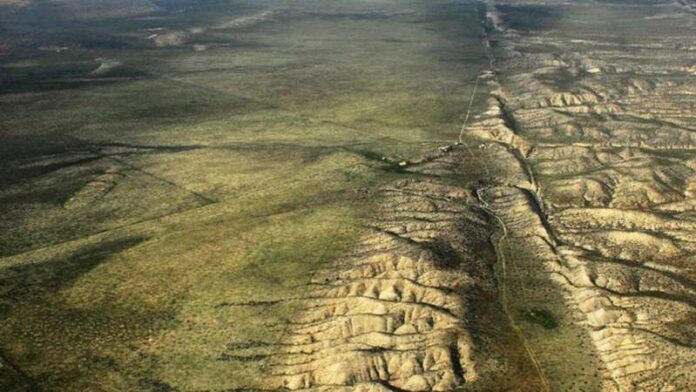When two rocks interact with each other in a fault zone, the roughness of their surfaces could influence the outcome, including when they cause earthquakes. Still, the underlying mechanics of this relationship remain unclear.
In a recent study, Beeler presents a new, alternative metric for analyzing surface roughness that could inform how roughness influences fault dynamics.
Traditionally, scientists have measured surface roughness using the average height of the bumps on a surface and that surface’s length. However, this means that the roughness of the same rock will vary depending on the length being considered; according to this metric, surfaces are rougher at small scales and smoother at large scales.
By contrast, instead of averaging height over surface length, the new metric averages height over wavelength: the distance between the repeating, larger-scale ups and downs of a rough surface, within which finer-scale bumps and troughs may occur. Using wavelength in this calculation yields a measure of roughness that no longer varies with the scale being considered.
Compared with the traditional length-based metric, the new wavelength-based metric is simpler and more applicable over a wide range of scales. This could help researchers better understand how roughness influences faults and earthquakes. But according to the author, the scale independence of the new metric also suggests that surface roughness may play a much smaller role in earthquakes than previously thought.
The study is published in the Journal of Geophysical Research: Solid Earth.
More information: N. M. Beeler, On the Scale‐Dependence of Fault Surface Roughness, Journal of Geophysical Research: Solid Earth (2023). DOI: 10.1029/2022JB024856
Journal information: Journal of Geophysical Research: Solid Earth
Provided by American Geophysical Union.

